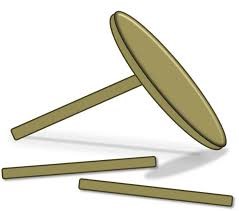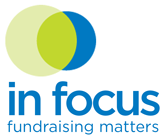Recent Posts
- The Secret Sauce: Strategies & Tactics to Engage Institutional Funders
- What Are Your Donors Saying When They Go Quiet? And How Should You Respond?
- Maximizing Year-End Giving: Strategies for a Successful Fundraising Campaign
- Navigating 2024’s Unique Year-End Fundraising Landscape
- Latest Giving USA Data
- How to Flex Your Case for Support to Raise More Money
- Maximizing Potential of Donor-Advised Funds: Strategies You Need To Know
How to Strengthen Your Fundraising Program, one Leg at a Time.
March 20, 2017Many nonprofits have the fundraising basics down. But sometimes expected growth and big dollar success is hard to come by, even with investments in your development program.
If your fundraising isn't yielding strong results or your nonprofit's revenue is unstable, consider whether you’ve got these three critical elements in place. If they’re not, like the perfectly simple seat or footrest, your “stool” may never be solid and could come crashing down.
Strengthen Your Fundraising Program
1) The first leg is your organization’s strategic plan and goals to achieve its mission. If these are not clear, or if your vision is small and uninspiring, you’ll find it hard to persuade donors and prospects to invest in your work. If you have a strategic plan filed away and think that means you’re good to go, revisit the document to see if it includes big ideas and bold steps. If it doesn’t, you’ve got some work to do!
If it’s not time to renew your plan, consider putting together a board working group to develop ideas that will inform your next plan. As you are defining these “strategic sketches,” share them with current donors to get their input. By reaching out to your supporters in advance and getting their buy-in, you’ll be keeping them engaged and listening to what’s important to them – two key fundraising elements!
2) Once you’ve got a clear direction and exciting vision, the next leg is ensuring you have a committed board willing to help raise needed funds and a solid staff who can execute on the plan. An engaged board and experienced staff indicates to your donors that your ideas are not just pie-in-the-sky, but rather they serve as blueprints and you’re ready to take action. With strong governance in place and staff members ready to dive in, your second leg will be secure. In addition to serving as a bridge to their contacts and potential donors, make sure your board members are all supporting your organization with their own financial commitment.
3) If you’re not sure who to share your big, bold vision with, the last leg of your stool is probably precarious. That’s because connections to major donors and prospects who can invest in your mission are vital to fundraising success.
For some nonprofits, this means contacts with national foundations or your regional corporate community, while for others this could mean links to individuals who have the means and, hopefully, the inclination to support your programs and services. Ideally, you’d have a mix of individual and institutional support.
If you need improvement here, consider ways to expand your contacts and work with your volunteer leadership – board members, committee members, community supporters – to establish and grow a list of “ideal” donors. You could also look at other, similar organizations to see who is supporting them. Do they have a mix of donors, at what level do funders give? Are there any familiar names?
Then it’s time to invite prospects in to your organization through friendraisers, cultivation events, open houses, etc. and get out of the office to meet with supporters. If you’re the Executive Director or lead fundraiser, you should be spending at least 60% of your time out of the office meeting with prospects and donors!
There are many ways to build a strong fundraising program and ensure you’ve got the support you need. These three areas are important elements and if you do one thing today, think about which of the three needs strengthening in your organization.
If you want to discuss your challenges or need help figuring out strategies to build support, drop a line or reach out. We offer one-hour complimentary consultations and would be happy to help.

